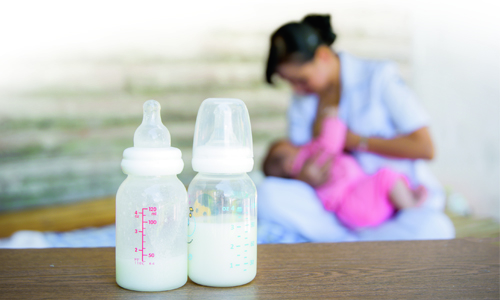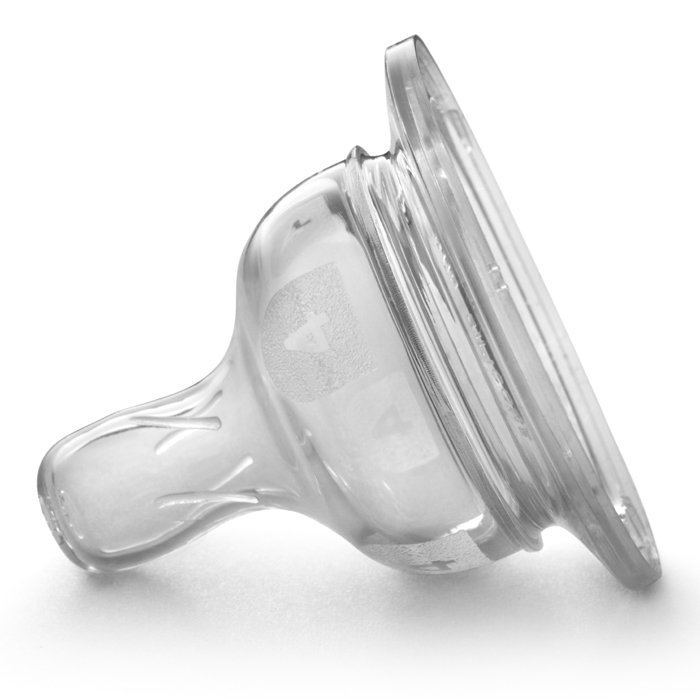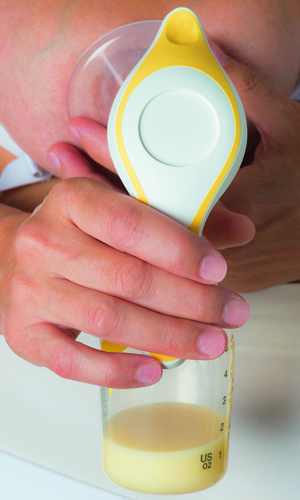Feeding equipment and sterilisation
Record learning outcomes
The vast array of feeding equipment and guidelines for safe sterilisation can make this category confusing for parents, but getting it right can save them time and trouble in the long run

The majority of baby feeding bottles hold around 260ml (9oz), although smaller bottles are available (up to 125ml/4oz), which are more suitable for newborns as they only drink small amounts. Bottles are available in standard, wide and super-wide neck widths. Anti-colic bottles have air vents, tubes or collapsible bags to prevent the build up of a vacuum inside the bottle during feeding. Disposable bottles are sterile, but single-use only. They can be a handy option when out and about.
Types of teat
Bottle teats can be wide, flat or shaped to mimic a mother’s nipple when in the baby’s mouth. In addition, there are specialist teats, including:
- Anti-colic teats: these help reduce the amount of air a baby swallows
- Orthodontic teats: designed to minimise harm to developing teeth. There is no evidence to suggest that one teat shape is better than another – the choice is down to the baby’s preference.
The flow rate is determined by the hole(s) in the top of the teat:
- Slow: suitable for newborns
- Medium: suitable for babies from three to six months
- Fast: suitable for babies from six months
- Variable: the flow adjusts to the baby’s sucking action and is also suitable for thicker or specialist feeds.
Parents should check that the milk comes out of the bottle at the right speed for their baby.
 Too big?
Too big?
If the hole is too big, the milk will come out too quickly. Gulping milk can lead to choking and difficulty feeding.
Too small?
If the hole is too small, the baby will have to work very hard and may become tired, irritable, full of wind and hungry. N.B. Some teats have multiple holes rather than just one large or small hole.
Wear and tear
Teats do wear out over time, so they should be checked regularly for wear and tear and replaced as necessary.
Silicone or latex?
Silicone teats are more durable, but latex teats are softer. Obviously, they are not suitable for babies with a latex allergy
Breast pumps
 There are three different types of breast pump available:
There are three different types of breast pump available:
Manual
The suction cup is placed over the nipple and the pump manually squeezed to extract milk. These pumps are inexpensive to buy and cost nothing to run. They are easy to use, quiet and put the mum in complete control during use. However, some mums find it hard to maintain suction while holding and pumping, and find that their hand can begin to ache
Battery-operated
These are easy to use as the machine does the hard work of extracting the milk. However, they can be costly because mums need to replace the batteries frequently and the pump doesn’t work as well when batteries are running low
Electric
These are easy to use, quick and have a constant power supply, which makes them good for mums who are expressing frequently. However, they can be quite noisy, depending on the model, and are the most expensive to buy. To help mums decide which type of pump is right for them, ask them how often they are going to be expressing milk and what their budget is.
Breast pumps can be hired so that mums can try them out before buying their own. Suggest they contact the National Childbirth Trust or the postnatal ward at their local hospital.
Useful websites
- NHS UK: bottle feeding advice
- HiPP: bottle feeding essentials
- SMA: expressing breast milk.
Read all the articles in this section? Now test your knowledge and add this to your learning log.
